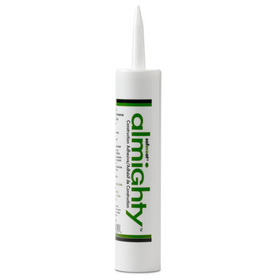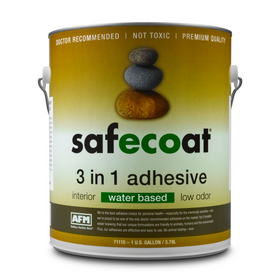
50 Years of Renovations: Artist Applies Sustainable Values to Her Home
Last Updated: Apr 11, 2025Susan and Gary Rappaport built their forever home nearly 50 years ago, in 1973. It was always supposed to be permanent, well-designed for aging in place with its soft and natural-feeling woolen carpets and wood butcher block countertops. Most importantly, they focused on creating big, open spaces with lots of windows to take in beautiful views of Lake Minnetonka to the west.
Even with the goal of permanence, a lot changes over 50 years. The Rappaports used the need for remodeling as an opportunity, making conscious decisions to increase their home's sustainability with each step along the way. As new technologies and knowledge about sustainable construction have developed, so has their home evolved. "We've always been interested in 'doing the right thing,'" Susan says. "Over the years, you make these choices, these decisions, and it adds up in the end."
In 1997, the Rappaports embarked on a major renovation and moved their upstairs bedroom to the main floor. They took the construction opportunity to replace their windows. The new triple-glazed, energy-efficient glass windows provide solar heat gain in the winter and ample natural light. Susan, never a fan of air conditioning, decided to strategically open windows and doors to allow the wind to ventilate her home naturally. Additional renovations and enhancements continued throughout the years, highlighted below.
Table of Contents
- Landscaping Overhaul
- Energy-Efficiency Upgrades
- Powder Room Remodel
- Found Object Art
- Encouraging Wider Change Toward Sustainable Living

Landscaping Overhaul
The summer of 2014 brought with it record amounts of rainfall and snowmelt, causing their lakefront yard and garden to flood. Rather than rebuild what already existed, Susan thought of the problematic evolution of the landscape as something educational, nature's way of teaching which materials work near the shore without drowning or blowing over in the wind. The following year, she hired a landscape architect to redesign her grassy lawn as a native wildflower garden that would be more equipped to survive the natural conditions. Her new philosophy is: "If I plant something and it doesn't come back, then it doesn't want to be here. And if other things spread, I think 'Ok, you're happy! You get to be here.'"

She also incorporated large trees, which provide extra shade for her home in the summer while allowing solar heat to reach the windows through exposed branches come wintertime. The Rappaports were careful to use only organic fertilizers and lawncare. The resulting new yard is a beautiful habitat for bees, butterflies, and birds that leaves minimal impact on the lake ecosystem while bringing them much joy.
Energy-Efficiency Upgrades
Thanks to Gary's interest in the mechanics of new technologies and daughter Melissa Rappaport Schifman's deep knowledge about sustainable home products, the Rappaports slowly replaced old appliances with new, more efficient electric ones. Over the years, incandescent bulbs became LEDs. An old refrigerator died and was replaced with an ENERGY STAR certified fridge in 2011. More recently, they swapped out their old air conditioner for a highly efficient system.

Although replacing home appliances is often seen as a cost, these types of upgrades can be seen as investments because they significantly decrease their electric bills. While the old refrigerator from 1972 used 3,054 kilowatt-hours (kWh) of electricity per year, the new ENERGY STAR fridge reduced that down to 474 kWh annually. Assuming the cost of electricity is 10 cents per kWh, the new fridge saves the Rappaports a whopping $258 every year! With the ENERGY STAR refrigerator's sticker price at $800, it took them less than 3.5 years to pay off that investment. So, since 2014, they've profited from it.
When upgrading lighting, they replaced each 65-watt incandescent bulb with an 11-watt LED bulb. Totaling all 65 bulb replacements around the house, the Rappaports decreased their annual usage from 7,711 kWh to 1,305 kWh, saving $641 each year. Although upgrading their lighting fixtures was a more expensive renovation, costing around $8,000, the long life of an LED bulb (12-17 years) means that she likely will not have to spend another dime on lighting before her entire investment has paid for itself.

During the heat of this past summer, their outdoor air conditioner gave out. They replaced the air conditioner with a new Amana ASX160241, which cost about $5,000. Still, it included a $450 rebate from Xcel Energy and a $400 rebate from Centerpoint Energy, thanks to its high EER and SEER efficiency ratings. This model's SEER (seasonal energy efficiency ratio) is 16—over and above the minimum of 13 required and 14.5 to qualify for ENERGY STAR rating. And it will undoubtedly save money on the monthly electricity bill. It's challenging to do a complete cost/benefit analysis of the unit since it's unknown how much a less efficient appliance would cost or how much energy that appliance would use. However, the new Amana unit is likely on par with other appliances in cost when considering the rebates and energy savings. If owned long enough, it may even become cheaper.
Beyond saving money, upgrading to more energy-efficient appliances has made a tangible impact on Rappaport's carbon footprint. To make this calculation, we use the EPA's Greenhouse Gas Equivalency calculator, which converts units of electricity (and other fuels) into equivalent units of carbon dioxide (CO2) emissions. Based on this calculator's estimate, Rappaport's new refrigerator reduces their annual CO2 emissions by 2.04 tons, and their new lighting system reduces their annual CO2 emissions by 5 tons. The new air conditioner will undoubtedly add to that. What a remarkable impact from upgrades that entirely pay for themselves over time!
Rappaport is only beginning to track the savings from their new air conditioner, which has the potential to be the most impactful change yet. She looks forward to appreciating the electric savings that come with her new system, both environmentally and financially.

Powder Room Remodel
Rappaport's most recent renovation has been her guest bathroom. With all of the knowledge she has acquired over the years, she gave it a highly sustainable remodel by many standards. The local Minnesota company Silestone designed the countertop and cabinetry, reducing environmental and financial shipping costs. She also replaced the sink and toilet with low-flow plumbing fixtures. They used low-VOC paints to retouch the walls and cabinetry to preserve the room's air quality and reduce harmful emissions exposure.

Found Object Art
Another part of Rappaport's life incorporated into her home is what she calls her "found object" artwork. This art is created by reusing old pieces of junk or other things that people might "throw away." She has been involved in the sustainable practice of creating found object art for several decades. For example, as a finishing touch to her new powder room, Rappaport reused old crystal glass antique pieces to construct a beautiful and unique LED chandelier that adds sparkle to the mirror.
Her walls are adorned with many of her art pieces. These include pieces like "Tie Guy," made from old ties that her husband no longer wore, and "Circuit City on eBay: Night," made with old useless computer chips and motherboards. Another, called "Botticelli Bottles," was constructed with discarded colorful plastic bottles.
Encouraging Wider Change Toward Sustainable Living
In her home update journey, Rappaport says that "if you're doing this for energy savings because philosophically you believe that's what we have to do as people, as citizens, then you can easily justify making these changes." She hopes that her home renovations can have powerful ripple effects as an example to others, encouraging them to develop their homes in line with their values. "You model that behavior over the years, and you talk about it with your friends, then they say 'Oh, that's a good idea,' and maybe they'll do that too. It's slow, it's not universal, but that's how change happens. With people being educated and setting examples."
With the guiding question, "Knowing what we know now instead of in 1973, what can we do differently to make an impact?" Rappaport achieved social, environmental, and financial benefits. Rappaport has loved her home all the way through and sees her journey as a motivational and educational example for friends and family. She considers it a demonstration of how even a long-term home can experience slow, positive change. "You start thinking about life, resources, and the impact you leave, and it spreads to your behaviors. That's a good thing. It's a natural evolution from a home philosophy into a life philosophy."
Zachary Marmet, Rise's Guest Author for this piece, is a student at the University of Michigan pursuing a Bachelor of Science in Environmental Studies with concentrations in sustainable business development and complex systems studies. He is a creative and energetic individual passionate about using business as a tool for environmental change.
All photo credits thanks to homeowner Susan Rappaport.
Rise
At Rise, we strive to make sustainable home improvement easy and accessible for everyone. Whether you're building or renovating, our thoroughly vetted building products will help you reduce your carbon footprint, lower energy costs, and create a more sustainable living or working environment.










